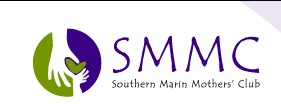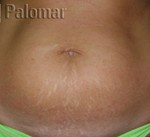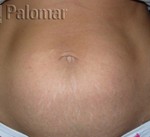Posted in Beauty Surgeon, Health and Beauty, Plastic Surgery

THE BEST BEAUTY SURGEONS
Bazaar’s Hot List: 24 doctors on the cutting edge
I am honored to have been recently featured in Harpers Bazaar’s HOT LIST of 24 Doctors on the Cutting Edge. Here’s what they said, “…. going under the knife remains the gold standard if you’re looking to significantly rejuvenate your face and body. This list is composed of doctors whose names are currently being whispered at dinner parties and texted between friends; it is but a small sample of the thousands of physicians in the U.S. who performed nearly 1.6 million cosmetic surgical procedures in 2012. The top five requests: breast augmentation, nose reshaping, eyelid surgery, liposuction, and face-lift.”
It’s a wonderful feeling to be professionally recognized by a magazine with the stature of Harper’s Bazaar!
Read more
Posted by Dr. Carolyn Chang San Francisco Plastic Surgeon
Posted in Health and Beauty, Plastic Surgery
I was recently interviewed again by the Southern Marin Mother’s Club for their ongoing series of articles, Feeling Good, Looking Good. In previous interviews I spoke about the cosmetic side of the Mommy Makeover. In the article below, I discuss medical procedures that are often necessary after pregnancy. These procedures can often be performed in conjunction with cosmetic procedures.
This article appeared in the Southern Marin Mother’s Club newsletter.

More information on the Southern Marin Mother’s Club can be found at www.southernmarinmoms.com
Dr. Carolyn Chang, San Francisco Plastic Surgeon
Feeling Good Looking Good
Medically Necessary Mommy Makeovers
Can you have your cake and eat it too? I spoke with San Francisco Mommy Makeover specialist Dr. Carolyn Chang about the growing trend of combining necessary medical procedures with elective cosmetic surgery in order to achieve the “ultimate” in mommy makeovers. As we know, pregnancy takes its toll on you physical appearance. It unfortunately, can also take its toll on your body from a medical perspective. Some of the least discussed medical issues that can arise after pregnancy include the appearance of abdominal and umbilical hernias, and urinary incontinence and urgency. These conditions can seriously interfere with your quality of life and in some case, even be detrimental to your health. As women are more open with their physicians, these problems are being discussed. Surgical options are often the only solution, and more and more moms are asking to have the procedures that they need performed in conjunction with the elective cosmetic surgeries that they want. I also spoke to Dr. Michelle Li, a General Surgeon, and Dr. Alexandra Haessler, an OB/GYN to help better understand the medical procedures themselves.
What combination procedures are you seeing most?
Dr. Chang: The overwhelming majority of my combination requests involve combining a tummy tuck with either a hernia repair or some sort of gynecological procedure. The hernias usually became prominent after pregnancy and are most often located at the belly button or in the anterior abdominal wall. Gynecological procedures can include a wide variety of medical conditions that need to be treated. Common ones include procedures for incontinence after surgery, fibroid or polyp removals, tubal ligations, and hysterectomies. Certainly breast procedures and liposuction can also be performed in conjunction with the treatment for these medically necessary conditions.
How are pregnancy-related hernias repaired?
Dr. Li: A hernia is a protrusion of any tissue or organ outside of where it normally lies. Hernias tend to occur at areas of natural weakness, and may be caused by increased pressure or tension on those areas. In pregnancy, the persistent and increasing pressure on the abdominal wall as the fetus grows can cause stretching at those weakened areas. A hernia will become evident when it becomes large enough that tissue or organs can fall through it and often appear as a persistent “bulge”. This is most often located in the groin or in the belly button.
Simple post-partum hernias are treated by bringing together and reinforcing the tissues of the abdominal wall that have separated, preventing the organs within the abdomen from “spilling through.” The hernia repair will fix the abnormal bulge, but will not usually significantly restore the contour of the entire abdominal wall, and for that reason, many women elect to undergo a tummy tuck at the same time.
As a rule, most hernia repairs that occur during pregnancy are deferred until after delivery. If, however, the bowel becomes entrapped in the hernia, the woman may feel pain, nausea, and bloating. If this becomes the case, prompt surgical intervention is necessary.
What can be done for women who are experiencing urinary incontinence and urgency after childbirth?
Dr. Haessler: Pregnancy and childbirth may be associated with trauma to the pelvic area and can involve muscular, connective tissue, or nerve injury, which is often undetected by the patient. These factors may contribute to weakening of the tissue that supports the pelvic organs. When the pelvic organs are not well supported they often do not function properly. Symptoms of pelvic floor dysfunction can include new urinary urgency, incontinence or incomplete bladder emptying. Occasionally, the vaginal walls protrude into or outside of the vagina causing an uncomfortable pressure or bulge. Other conditions may occur, such as a gaping of the vaginal opening or problems with defecation. If a woman develops these symptoms after a birth, she may be suffering from such a condition. These conditions are rarely dangerous; however they can interfere with sexual function and significantly impact a woman’s quality of life.
Typically, if the symptoms do not improve with time and pelvic floor strengthening exercises, several minimally invasive surgical procedures are available to resolve the problem. The most common procedure is designed to treat urinary incontinence that occurs during exertion, such as exercise or coughing. It involves placement of a small sling between the vagina and urethra. In this case, the support under the urethra is restored. After the surgery, most women report they are able to resume a full range of exercise and activities while remaining dry. They often wonder why they had not had the surgery earlier.
These procedures are typically short in duration and thus are very safe to be performed in conjunction with other procedures such as a tummy tuck.
What are the advantages and disadvantages of the combination surgery approach?
Dr. Chang: The main advantage for busy moms is minimizing recovery time. One recovery allows for maximal results with the least time away from the family. The other advantage, of course, is that she is able to have the cosmetic procedure that she wants with the procedure that she needs, and that makes having surgery much more palatable. It’s like a gift with purchase! And finally, there can be some financial benefit to combing procedures. Although the cosmetic portion is never covered by insurance, depending upon the insurance plan, some of the hospital charges and anesthesia costs for the cosmetic portion can be subsidized by the medically necessary portion. A word of caution, however, is that the savings may not be as significant as one would think due to the constraints of insurance plans and hospital billing practices. But in the end, every little bit does help.
The main disadvantage to combining procedures is that the recovery may be a little more extensive than if only one of the procedures was performed. In my experience, however, I have found that this extra time for recovery and discomfort has been relatively minor and short lived, and that overall recovery time is still much shorter for a combination procedure.
How do I know if I am a candidate for a combination surgery?
Just ask! Your physician will be able to guide you as to the safety and feasibility of combining procedures. He or she can also provide you with references for surgeons that can perform the desired procedures.
Posted by Dr. Carolyn Chang San Francisco Plastic Surgeon
Posted in Health and Beauty, Plastic Surgery
Carolyn Johnson, KGO anchor and health reporter, recently ran this piece about the use of the Palomar Starlux laser for stretch marks on the ABC local nightly news. You might find this interesting!
View the KGO News segment about the Starlux Laser
Dr. Carolyn Chang, San Francisco Plastic Surgeon
Posted by Dr. Carolyn Chang San Francisco Plastic Surgeon
Posted in Health and Beauty, Plastic Surgery
The Palomar Starlux laser has recently been cleared by the FDA for the treatment of stretch marks! This laser represents the only procedural modality available that has been shown to improve stretch marks. The initial clinical studies were all performed in Europe, and I am pleased to announce that Palomar has asked myself and Dr. Vic Narurkar to conduct confirmatory studies in the United States. In addition, we will be refining treatment protocols and developing ways to better quantify results and predict treatment responses. Please contact us if you would like to be evaluated for inclusion into the clinical trials.
You can view Palomar’s initial press release here.
The Starlux laser is a fractional non-ablative laser that works beneath the skin surface to increase collagen content in the skin. Small columns of micro beams emanate from the laser, penetrate the skin, and work in the dermal layers. A stretch mark represents an area of the skin that has thinned due to excessive stretching, hormonal changes, or steroid use. By increasing the amount of collagen in these damaged areas, the skin “plumps,” and the depth of the stretch mark is reduced. Unlike the older ablative lasers, the skin surface itself is not damaged or abraded, and so many of the undesirable side effects that we saw before with lasers are avoided. There is virtually no down time, and the major side effect profile involves the potential for hyperpigmentation, or darkening of the skin. Fortunately, if this occurs, the pigmentary change gradually resolves in most patients.
Because skin types are variable, the response to the treatments are variable, and so results can vary widely, from only a mild improvement to a major improvement. In general, however, one should see some improvement overall. In order to achieve the best results, 2 or 3 total treatments may be necessary, and improvement can be noted even as far a year after initial treatment.
I am especially excited about this application for the Starlux laser. It will allow my “mommy makeover” patients to achieve an even more complete abdominal rejuvenation. The tummy tuck brings the abdominal area back to pre-pregnancy shape, and the Starlux laser will be able to improve the skin quality and texture. For those who don’t wish to undergo surgery or don’t need it, this treatment will potentially provide a welcome relief to unsightly stretch marks!

abdominal stretch marks before treatment

abdominal stretch marks after treatment
For more information, Dr. Narurkar and I recently participated in an instructional webinar for Palomar Medical. You can view this webinar at this link. And you can read the original research protocols and results here.
Dr. Carolyn Chang, San Francisco Plastic Surgeon
Posted by Dr. Carolyn Chang San Francisco Plastic Surgeon
Posted in Health and Beauty, Lifestyle, Plastic Surgery
It’s 2010, and we are not only embarking on a New Year, but also a new decade! So too come the traditional New Year’s resolutions. Maybe you have chosen to kick a bad habit, exercise more, eat things that are better for you, or do a little more to make the planet a better place. Or maybe you’d like to turn back time, in the mirror at least – a whole decade would be great, wouldn’t it?!

Surprisingly, there are a number of great smaller, relatively easy, pick-me-ups that can make a big impact. These procedures are less invasive, concentrated in one smaller area, and require minimal downtime. Here are my favorite suggestions for a more youthful 2010:
Spot Liposuction
It is amazing how achieving more definition in one spot area can give you a leaner, more defined appearance. Some of the best spot areas to target include the arms and on the flanks (aka love handles). Liposuction performed under the chin in the neck area can give you the appearance of a neck lift, and is a favorite among my younger patients who are just starting to see early sagging and bagging.
Incisionless (hidden incision) Lower Lid Blepharoplasty
This procedure is also known as a transconjunctival lower lid blepharoplasty and is a subtle way to peel back the years. In this procedure, the incision is located on the inside of the lower lids, so the healing is less noticeable. Excess fat that causes the look of under eye bagginess can be removed through these hidden incisions, giving the lower lid a firmer, smoother appearance.
Fat Sparing Upper Lid Blepharoplasty
This procedure is a more modern version of the traditional upper eyelid lift. As a result, it is less invasive, easier to recover from, and more natural appearing, especially over the long term. Traditionally, with an upper eyelid lift, the goal is to brighten the eyes by removing the excess skin that droops over the eye with aging. Along with this, the excess fat around the upper lid is removed as well. The newer fat sparing technique emphasizes a more conservative fat removal to prevent a sunken or unnatural appearance over time. Because less fat is removed, the procedure is less extensive, and can easily be performed in the office under a local anesthetic. This is not your mother’s eyelid lift!
If you would like more information on any of these procedures, please contact us. We would be glad to answer any questions that you may have.
And Have a Happy, Healthy New Year – Cheers!
Dr. Carolyn Chang, San Francisco Plastic Surgeon
Posted by Dr. Carolyn Chang San Francisco Plastic Surgeon










